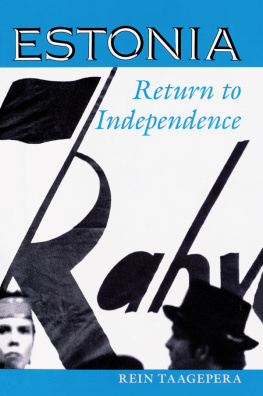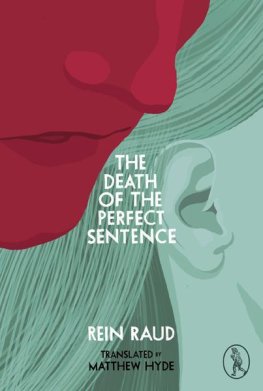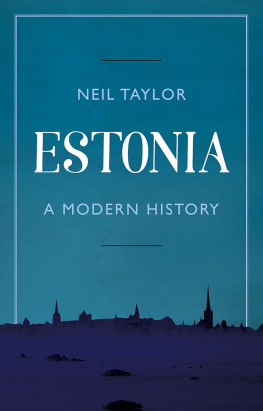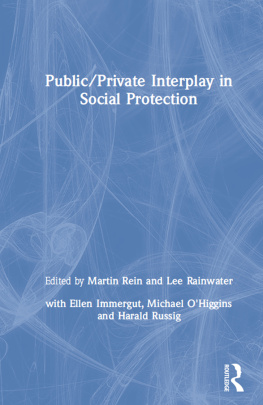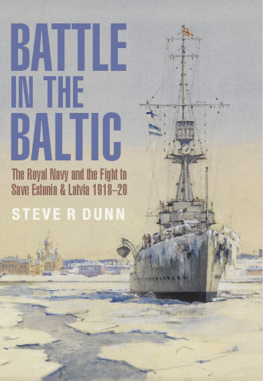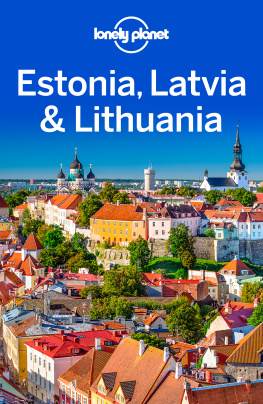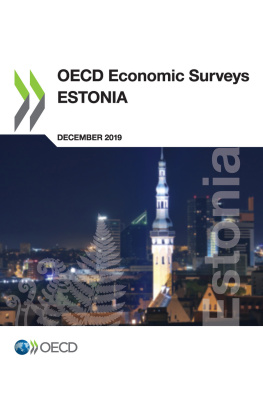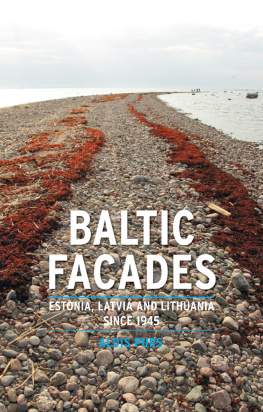Estonia
Westview Series on the Post-Soviet Republics
Alexander J. Motyl, Series Editor
Estonia: Return to Independence, Rein Taagepera
Belarus: At a Crossroads in History, Jan Zaprudnik
Common Sovereignty: The Politics of Change in the Central Asian Republics, Gregory Gleason
Latvia: Independence Renewed, Janis J. Penikis
Lithuania: The Rebel Nation, V. Stanley Vardys
Russia, Paul Goble
Siberia: Worlds Apart, Victor L. Mote
The Transcaucasian Borderland Republics: Armenia, Azerbaijan, and Georgia, Henry R. Huttenbach
Ukraine: From Nationality to Nation, Yaroslav Bilinsky
First published 1993 by Westview Press
Published 2018 by Routledge
711 Third Avenue, New York, NY 10017, USA
2 Park Square, Milton Park, Abingdon, Oxon OX14 4RN
Routledge is an imprint of the Taylor & Francis Group, an informa business
Copyright 1993 Taylor & Francis
Chapter 4 is largely condensed from Romuald Misiunas and Rein Taagepera, The Baltic States: Years of Dependence 19401980 (Berkeley: University of California Press), copyright 1983 by Romuald Misiunas and Rein Taagepera. Reprinted with permission of University of California Press.
All rights reserved. No part of this book may be reprinted or reproduced or utilised in any form or by any electronic, mechanical, or other means, now known or hereafter invented, including photocopying and recording, or in any information storage or retrieval system, without permission in writing from the publishers.
Notice:
Product or corporate names may be trademarks or registered trademarks, and are used only for identification and explanation without intent to infringe.
Library of Congress Cataloging-in-Publication Data
Taagepera, Rein.
Estonia : return to independence / Rein Taagepera.
p. cm. (Westview series on the post-Soviet republics)
Includes bibliographical references (p. ) and index.
ISBN 0-8133-1199-3 (hard). ISBN 0-8133-1703-7 (pbk.)
1. EstoniaHistory. I. Title. II. Series.
DK503.54.T33 1993
947.41dc20
92-21376
CIP
ISBN 13: 978-0-8133-1703-8 (pbk)
The past and the present are intertwined. History cannot be written as it actually took place. One has to weigh and select, and this means that one inevitably uses filters. Historians who pretend to be neutral merely are saying they have never seriously questioned their biases. Facing our biases does not abolish them, but this is the only way to try to attenuate the effect of filters. What are some of my filters?
There is the filter of a boy of eight hiding in the rye while some village buildings were burning and Soviet troops lined his parents against a wall (they escaped)and who soon after heard that people he knew had vanished in the antioccupation reaction on trumped-up charges. There is also the filter of a teenager sensing the incongruity of his being part of the French colonial society in Morocco while Russians were colonizing his homeland. Further, there is the Ph.D. physicist trained to ask But is another explanation possible, and how do you get the precise data needed to tell the difference? And so on.
Another set of filters made itself felt in September 1991 as Estonia finally regained its independence. One year earlier, when I proposed to Westview Press the title Estonia: Return to Independence, it was an informed act of faith; it still was so in July 1991 as I was completing the draft manuscript. Then, sticking to travel plans made far in advance, I arrived in Estonia on 25 August 1991five days after Estonias proclamation of immediate independence, adopted in the midst of a messy coup in Moscow. Two weeks later, fifty countries, including the United States and, finally, the USSR, had recognized Estonias return to independence. I found myself chairing the first public meeting of a brand new Peoples Center Party and was elected to the Estonian Constitutional Assemblyits only member to reside in the Western Hemisphere. These were heady days. Obligingly, reality had adjusted itself to my book title. But what about the filter?
When I read my draft in light of Estonias regained independence, many events as far back as 1938 suddenly looked different; their interpretation and relative importance had changed. I also faced a different readership. One deep bias we all share is a liking for the status quo, provided it does not affect us negatively in a direct way. Except for improving our own situation, we wish the rest of the world to remain comfortably unchanged. I remember a colleague patiently trying to persuade me in May 1991 of the economic inadvisability and, indeed, impossibility of Estonias independenceand happily congratulating me on that same independence in September. He had not reversed his position. He remained a staunch proponent of the status quo in faraway places. It was the status quo that had shifted, and Estonias independence now was part of it.
Thus, apart from my own biases, I had to adjust to a changed attitude on the part of prospective readers. In July 1991, the title Estonia: Return to Independence was disquietingly anti-status quo and had to be defended against all sorts of objections. In 1993, it is likely to be a comfortingly pro-status quo statement (unless catastrophic reversals take place). Accordingly, the average readers reception of even the nineteenth-century history of Estonia would be different.
Mikhail Gorbachevs abdication and the formal end of the USSR in December 1991 again changed the status quo and hence our perception of the past. My criticism of Gorbachev in , written while his tanks still threatened Estonia, might sound in 1993 as if I was whipping a dead horse. And when the United States recognized the independence of Kazakhstan in December 1991, less than four months after recognizing the Estonian resumption of independence, the tireless Estonian efforts toward that goal during the preceding years looked less crucial than they did in September 1991.
Thus, history cannot be perceived as it actually unfolded, because perception belongs to the present. Inescapably, as we interpret and reinterpret past events in light of what followed, the past and the present become intertwined.
* * *
An earlier book I coauthored on the Baltic states (Misiunas and Taagepera 1983) was called encyclopedic by one critic, and he had a point. The subject matter was so wide-ranging and novel that the essential facts crowded out the evaluation of them. Because of the existence of that previous book, the narrower geographic scope of the present one, and Toivo Rauns recent and thoroughly documented Estonia and the Estonians (1991a), I have been able to take a different approach this time. I often ask: What is the overall meaning of this mass of facts? and give my answer for the reader to accept, reject, or hold in abeyance. As for details, I refer to earlier books, especially for pre-1980 history. The second half of the present book deals with the events and issues of the last ten years, the events that led Estonia from a totally silenced colony to recovery of its independence, and more detail is given for this period. The bibliography includes works on all periods of history but especially those published since 1982 in English.

